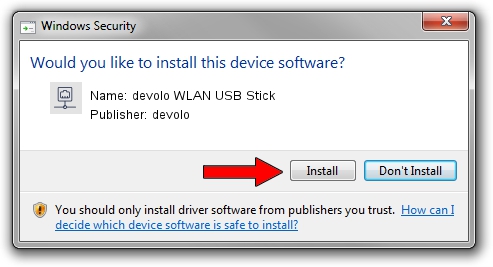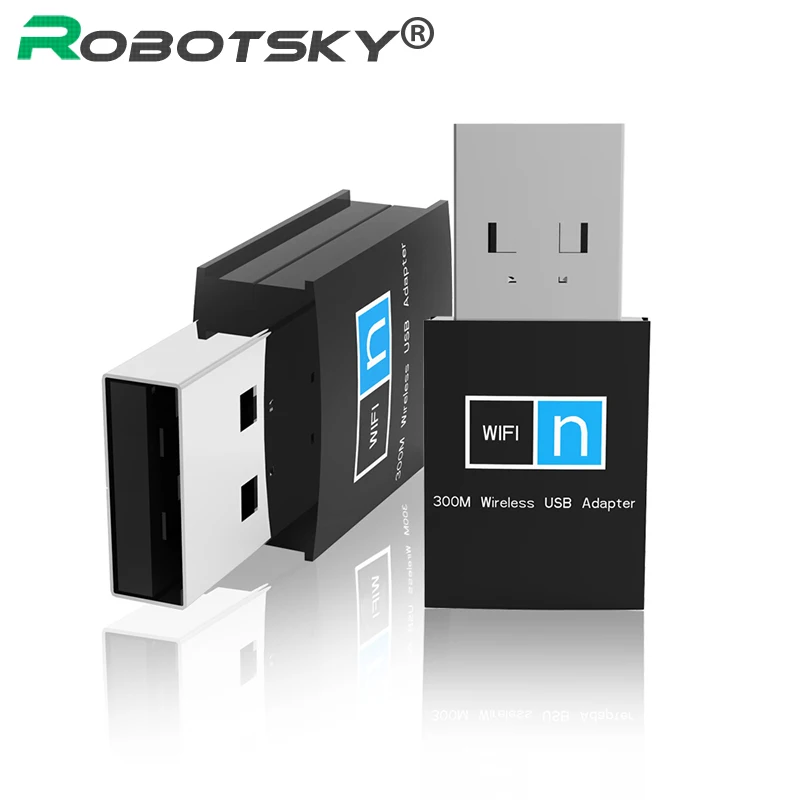- Devolo Network & Wireless Cards Driver Download
- Devolo Network & Wireless Cards Driver Download Windows 7
- Devolo Network & Wireless Cards Driver Download Windows 10
This is a hands-on tutorial of some of the most commonly-used DevTools features relatedto inspecting network activity for a page.
- Page 5 Method B: Configuration via App Download the devolo Home Network App An installation assistant will guide you step-by-step through the con iguration. Page 6 The repeater is connected to the router. Flashes slowly for a max. WPS function is being carried out Flashes white The devolo WiFi Repeater+ ac.
- Devolo WiFi ac Repeater review: Setup. Like most of its rivals, the Devolo is very easy to set up. In theory, at least. You plug it in somewhere close to your router, and press the WPS button on both devices. On the Devolo, this means holding the button for 3-9 seconds.
- Product features Anyone looking to set up a home network across several floors is familiar with the problem of poor WiFi signals. The signal is too weak right at the place where the connection is needed most or it doesn't even reach distant rooms. The devolo WiFi Repeater puts an end to this problem by extending your existing network.
- Slow, unreliable and time-consuming internet browsing in the home is now a thing of the past thanks to Devolo’s state-of-the-art WiFi ac Repeater. The repeater acts as a WiFi range extender and your entire home can now benefit from buffer-free browsing due to a boosted WiFi signal and increased network speed of an impressive 1200 Mbps.
The new devolo Home Network App is as fantastic as the Magic network itself. For example, you can use it to set up and control your Magic WiFi adapters amazingly simply and fantastically fast. Wherever in the house you are, you can view all adapters. A list of products compatible with the Home Network App can be found here.
See Network Reference if you want to browse features instead.
[!VIDEO embed/e1gAyQuIFQo] -->When to use the Network panel
In general, use the Network panel when you need to make sure that resources are being downloaded or uploaded as expected. The most common use cases for the Network panel are:
- Making sure that resources are actually being uploaded or downloaded at all.
- Inspecting the properties of an individual resource, such as the HTTP headers, content, size, and so on.

If you are looking for ways to improve page load performance, do not start with the Network tool. There are many types of load performance issues that are not related to network activity. Start with the Audits panel because it gives you targeted suggestions on how to improve your page. Navigate to Optimize Website Speed.
Open the Network panel
Devolo Network & Wireless Cards Driver Download
To get the most out of this tutorial, open up the demo and try out the features on the demo page.
Open the Get Started Demo.
Open DevTools by pressing
Control+Shift+J(Windows, Linux) orCommand+Option+J(macOS). The Console tool opens.You may prefer to dock DevTools to the bottom of your window.
Select the Network tab. The Network panel opens.
Right now the Network panel is empty. DevTools only logs network activity after you open it and no network activity has occurred since you opened DevTools.
Log network activity
To view the network activity that a page causes:
Reload the page. The Network panel logs all network activity in the Network Log.
Each row of the Network Log represents a resource. By default the resources are listed chronologically. The top resource is usually the main HTML document. The bottom resource is whatever was requested last.
Each column represents information about a resource. In the previous figure the default columns are displayed.
- Status. The HTTP status code for response.
- Type. The resource type.
- Initiator. The cause of the resource request. Selecting a link in the Initiator column takes you to the source code that caused the request.
- Time. The duration of the request.
- Waterfall. A graphical representation of the different stages of the request. Hover over a Waterfall to see a breakdown.
Note
The graph above the Network Log is called the Overview. You will not use the Overview graph in this tutorial, so you may hide it. See Hide the Overview pane.
After you open DevTools, it records network activity in the Network Log.
To demonstrate this, first look at the bottom of the Network Log and make a mental note of the last activity.Now, select the Get Data button in the demo.
Look at the bottom of the Network Log again. You should see a new resource called
getstarted.json. Selecting the Get Data button caused the page to request this file.
Show more information
The columns of the Network Log are configurable. You may hide columns that you are not using.
There are also many columns that are hidden by default which you may find useful.
Hover on the header of the Network Log table, open the contextual menu (right-click), and choose Domain. The domain of each resource is now shown.
Tip
See the full URL of a resource by hovering over the cell in the Name column.
Simulate a slower network connection
The network connection of the computer that you use to build sites is probably faster than the network connections of the mobile devices of your users. By throttling the page, you get a better idea of how long a page takes to load on a mobile device.
Choose the Throttling dropdown, which is set to Online by default.
Choose Slow 3G.
Long-press Reload () and then choose Empty Cache And Hard Reload.
On repeat visits, the browser usually serves some files from the cache, which speeds up the page load. Empty Cache And Hard Reload forces the browser to go the network for all resources. This is helpful when you want to see how a first-time visitor experiences a page load.
Note
The Empty Cache And Hard Reload workflow is only available when DevTools is open.
Capture screenshots
Screenshots let you see how a page looked over time while it was loading.
Choose () and turn on the Capture screenshots checkbox.
Refresh the page again using the Empty Cache And Hard Reload workflow. Navigate to Simulate a slower connection if you need a reminder on how to do this.
The Screenshots pane provides thumbnails of how the page looked at various points during the loading process.Choose the first thumbnail. DevTools shows you what network activity was occurring at that moment in time.
Choose () again and turn off the Capture screenshots checkbox to close the Screenshots pane.
Refresh the page again.
Inspect the details of the resource
Choose a resource to learn more information about it. Try it now:
Choose
getstarted.html. The Headers tab is shown. Use this tab to inspect HTTP headers.Choose the Preview tab. A basic rendering of the HTML is shown.
The tab is helpful when an API returns an error code in HTML. You may find it easier to read the rendered HTML than the HTML source code, or when you inspect images.
Choose the Response tab. The HTML source code is shown.
Tip
When a file is minified, choose the Format () button at the bottom of the Response tab to re-format the contents of the file for readability.
Choose the Timing tab. A breakdown of the network activity for the resource is displayed.
Choose Close () to view the Network Log again.
Search network headers and responses
Use the Search pane when you need to search the HTTP headers and responses of all resources for a certain string or regular expression.
For example, suppose you want to verify that your resources are using reasonable cache policies.
Choose Search (). The Search pane opens to the left of the Network log.
Type
Cache-Controland selectEnter. The Search pane lists all instances ofCache-Controlthat it finds in resource headers or content.Choose a result to view the resource in which the result was found. If you are looking at the details of the resource, select a result to go directly to it. For example, if the query was found in a header, the Headers tab opens. If the query was found in content, the Response tab opens.
Close the Search pane and the Headers tab.
Filter resources
DevTools provides numerous workflows for filtering out resources that are not relevant to the task at hand.

The Filters toolbar should be turned on by default. If not:
- Choose Filter () to show it.
Filter by string, regular expression, or property
The Filter text box supports many different types of filtering.
Type
pnginto the Filter text box. Only the files that contain the textpngare shown. In this case the only files that match the filter are the PNG images.Type
/.*.[cj]s+$/. DevTools filters out any resource with a filename that does not end with ajor acfollowed by 1 or morescharacters.Type
-main.css. DevTools filters outmain.css. If any other file matched the pattern they would also be filtered out.Type
domain:cdn.glitch.cominto the Filter text box. DevTools filters out any resource with a URL that does not match this domain.See Filter requests by properties for the full list of filterable properties.
Clear the Filter text box of any text.
Filter by resource type
To focus in on a certain type of file, such as stylesheets:
Choose CSS. All other file types are filtered out.
To also see scripts, hold
Control(Windows, Linux) orCommand(macOS) and then choose JS.Choose All to remove the filters and see all resources again.
See Filter requests for other filtering workflows.
Block requests
How does a page look and behave when some of the page resources are not available? Does it fail completely, or is it still somewhat functional? Block requests to find out:
Select
Control+Shift+P(Windows, Linux) orCommand+Shift+P(macOS) to open the Command Menu.Type
block, choose Show Request Blocking, and selectEnter.Choose Add Pattern ().
Type
main.css.Choose Add.
Reload the page. As expected, the styling of the page is slightly messed up because the main stylesheet has been blocked.
Note
The
main.cssrow in the Network Log. The red text means that the resource was blocked.Deselect the Enable request blocking checkbox.
Conclusion

Congratulations, you have completed the tutorial. You now know how to use the Network panel in the Microsoft Edge DevTools!

Navigate to the Network Reference to discover more DevTools features related to inspecting network activity.
Getting in touch with the Microsoft Edge DevTools team
Use the following options to discuss the new features and changes in the post, or anything else related to DevTools.
- Send your feedback using the Send Feedback icon or select
Alt+Shift+I(Windows, Linux) orOption+Shift+I(macOS) in DevTools. - Tweet at @EdgeDevTools.
- Submit a suggestion to The Web We Want.
- To file bugs about this article, use the following Feedback section.
Devolo Network & Wireless Cards Driver Download Windows 7
Note
Portions of this page are modifications based on work created and shared by Google and used according to terms described in the Creative Commons Attribution 4.0 International License.
The original page is found here and is authored by Kayce Basques (Technical Writer, Chrome DevTools & Lighthouse).
Devolo Network & Wireless Cards Driver Download Windows 10
This work is licensed under a Creative Commons Attribution 4.0 International License.
